Red Light Therapy for Gut Health: Benefits, Science, and How to Use It
Red Light Therapy is emerging as an exciting new way to support your gut. And it’s not just hype. Science is starting to catch up with what many people have long suspected: our bodies are light-sensitive in more ways than one.
At Fringe, we’ve been exploring how light can be used not just on the surface (for skin, pain, or recovery), but deeper into the body. Let’s take a closer look at how Red Light Therapy works, why it may benefit your gut, and how you can use something as simple as light to support your digestive system.

Why Gut Health Matters More Than Just Digestion
Your gut is about more than just digestion. It’s an intricate system that involves extensive nutrient processing, immune regulation, and communication with the brain. It’s also home to your gut microbiome, which is a vast community of trillions of microbes that live in your intestines and have a huge impact on how you feel, think, and function.
The extent and impact of the gut microbiome on our health is incredible. The human body contains more microbial genes than human ones, and these microbes play a role in everything from making vitamins and digesting food to regulating mood through neurotransmitters like serotonin and GABA. When your microbiome is in balance, you feel it. And when it’s not, you definitely feel that too, through effects like bloating, fatigue, poor mood, or even systemic inflammation.
How Modern Living Affects Gut Health and Inflammation
Our modern lifestyle is really hard on our gut health. Processed food, high sugar intake, sedentary habits, chronic stress, and medications like antibiotics can disrupt the microbiome and damage the gut lining. This disruption, called dysbiosis, can lead to inflammation, “leaky gut” (increased intestinal permeability), and a cascade of symptoms that affect the brain, immune system, metabolism, and more.
In fact, poor gut health has been linked to a long list of conditions, including type 2 diabetes, autoimmune disease, depression, chronic pain, Parkinson’s Disease, and even Alzheimer’s Disease. The emerging consensus is that what happens in the gut doesn’t stay in the gut, and can be felt throughout the whole body.

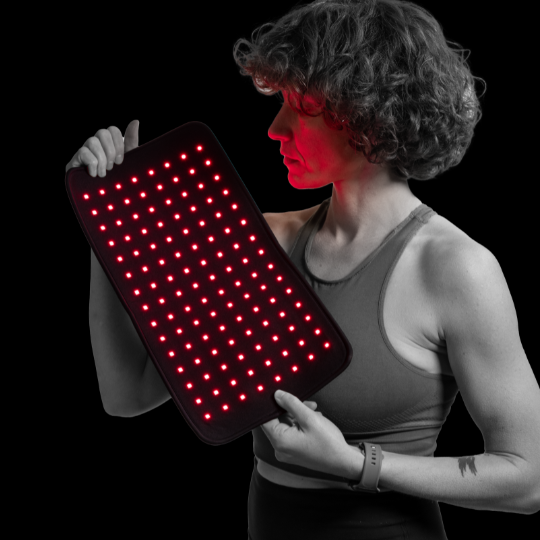

How Red Light Therapy Supports Gut Health
You’ve probably seen Red Light Therapy mentioned in the context of skincare, athletic recovery, or anti-aging. But it’s also showing promise as a tool for gut support, especially when applied to the abdomen using red and near-infrared (NIR) light.
Red Light Therapy works by delivering red and/or near infrared light wavelengths to the body for the purpose of influencing biology. These wavelengths are absorbed by the mitochondria in our cells – our energy producing powerhouses – which then boost ATP production, reduce oxidative stress, and decrease inflammation. It’s a chain reaction of cellular benefits that can improve tissue function and reduce pain, all without heat or damage.
And what’s remarkable is that this therapy isn’t just beneficial for your human cells. Your microbiome may be light sensitive too.

Can Red Light Therapy Improve the Gut Microbiome? What Research Says
While this is still a new area of science, several studies suggest red and near-infrared light can positively impact gut health in two important ways:
- Modifying the Microbiome
Research in animals and humans shows that when red or NIR light is applied to the abdomen, the composition of gut bacteria shifts in a healthier direction. For example, in mice, abdominal light therapy increased levels of beneficial bacteria. Similarly, in people with Parkinson’s and Alzheimer’s, light therapy applied to regions including the gut helped normalize microbiome imbalances and was even associated with better physical and cognitive performance. - Reducing Inflammation and Oxidative Stress
Red and near infrared light help to reduce inflammation, which is a major driver of gut dysfunction. These light wavelengths reduce reactive oxygen species (ROS), prostaglandins, and other inflammatory messengers that damage tissues. In animal models of colitis (an inflammatory gut condition), abdominal light therapy reduced gut inflammation and improved overall gut health.
Together, these effects create a more favorable environment in the gut, supporting both your microbiome and your own cells.
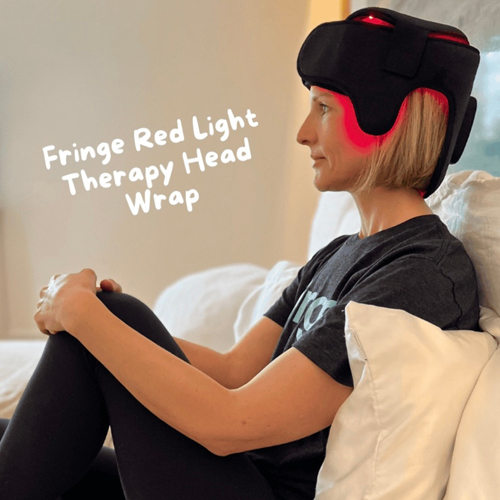
Gut-Brain Axis and Red Light:
How Light Therapy Affects the Brain Through the Gut
One of the most surprising parts of this story is how much the gut and brain are connected. The gut-brain axis is a two-way communication network between your central nervous system and your digestive tract. It’s why your gut can influence your mood, and why stress can impair with your digestion. This is also why studies that apply light to the abdomen also often apply it to the head or neck.
By calming gut inflammation and supporting the microbiome, Red Light Therapy may have ripple effects on brain health. While research is needed to confirm this hypothesis, it has been suggested that light therapy applied to the abdomen may be useful in reducing depression. This is because the composition of the gut microbiome has been linked to depression, with depressive patients showing higher levels of certain bacteria that are involved in the synthesis of neurotransmitters associated with mood. It has also been hypothesized that through the microbiome gut-brain axis link, Red Light Therapy may help with neurodegenerative diseases such as multiple sclerosis, and neurodevelopment diseases such as autism.
How to Use Red Light Therapy for Gut Health
Red Light Therapy for gut health involves shining light directly onto the abdominal region. The idea is to get red and near-infrared light through the skin and into the tissues of the digestive tract.
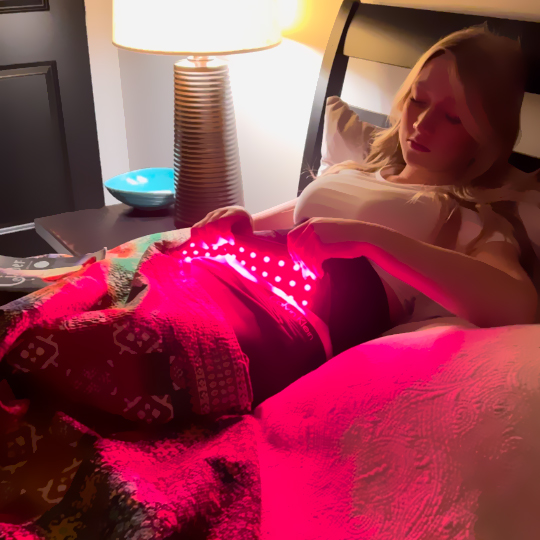
Here’s what to consider:
- Device Type: Choose a light therapy device that allows for abdominal application. Panels work if you’re standing, but wraps are a more flexible option—you can use them while sitting or lying down. That’s one reason the Fringe Red Light Therapy Regular Wrap is such a great fit. It’s flexible, wireless, and designed for home use.
- Wavelengths: Look for devices that use both red (around 660 nm) and near-infrared (around 850 nm) light. These are the most studied and are known to penetrate deeply into tissues.
- Irradiance (Intensity): Studies using Red Light Therapy over the abdomen have usually used low to moderate intensity light. For example, in a 2022 study of Alzheimer’s Disease patients, light was applied to the abdomen at an intensity of 20-30mW/cm2. This level of light intensity is known to be safe for longer periods of exposure and does not cause tissue damage or heating.
- Timing & Frequency: Red Light Therapy should not be done more than once per day, and studies often find benefit at frequencies of 2-5 times per week. Treatment sessions of 10-20 minutes are ideal. Consistency matters more than intensity.
- Clothing: Light needs to hit your skin directly, so expose your belly and position the device as close to the skin as possible.
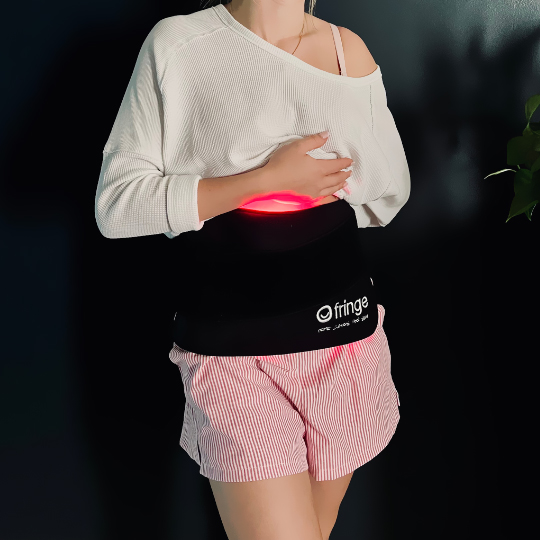
What to Expect from Red Light Therapy and Other Gut-Friendly Habits
It’s important to recognize that when it comes to gut health, the research is promising but still very limited in terms of both quantity and quality. There’s still a lot that we don’t know, and there are only a small handful of human and animal studies looking at gut health specifically. However, there is abundant evidence that it is a safe and effective tool for supporting human health across a wide range of outcomes.
It’s also important to acknowledge that Red Light Therapy may be a useful tool to support gut health, but it’s unlikely to be a standalone solution. For best results, combine it with other gut-friendly practices:
- Eat a diet rich in fiber and whole foods
- Stay hydrated
- Avoid excessive antibiotics and processed food
- Move your body regularly
- Manage stress (your gut really does feel your feelings)
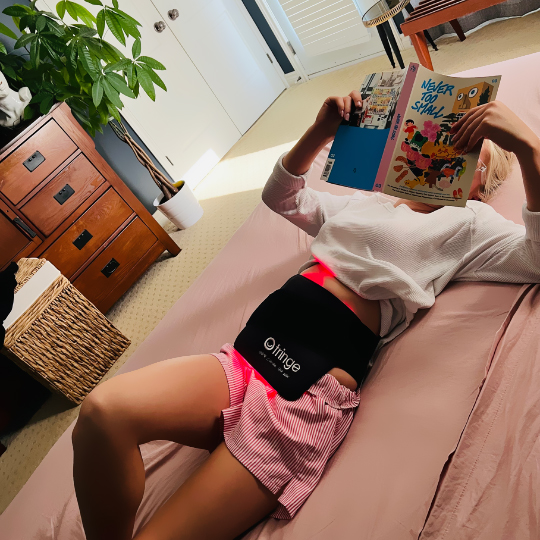
Why We Made the Fringe Red Light Therapy Regular Wrap
At Fringe, we designed the Regular Red Light Therapy Wrap to be simple, effective, and enjoyable to use. We know life gets busy, so we made it wearable, wireless, and comfortable so you can treat your gut (or another body part!) while you rest, read, or go about your day.
The wrap delivers both red and near-infrared light at optimal wavelengths, designed with evidence-based parameters in mind. It’s part of our broader commitment to creating healing tools that respect the body’s natural intelligence and work in harmony with it.
Conclusion
Your gut plays a central role in maintaining overall health, influencing everything from digestion and immune function to mood and cognition. While there’s no single solution for optimal gut health, red and near-infrared light therapy is emerging as a valuable, non-invasive tool to support the gut-brain axis, reduce inflammation, and help promote a more balanced microbiome.
Although this field is still developing, early clinical and preclinical evidence suggests that light therapy can positively impact gut-related physiology. Whether you’re navigating a chronic condition or simply looking to support your foundational health, incorporating targeted light therapy may offer a meaningful addition to your gut health toolkit.
about the author
Dr. Genevieve Newton, DC, PhD spent close to 20 years as a researcher and educator in the field of nutritional sciences before joining Fringe as its Scientific Director. Gen’s job is to “bring the science” that supports Fringe’s products and education. She is passionate about all things Fringe, and is a deep believer in healing body, mind and spirit using the gifts of the natural world.
The contents in this blog; such as text, content, graphics are intended for educational purposes only. The Content is not intended to substitute for professional medical advice, diagnosis, or treatment. Always seek the advice of your healthcare provider.

Can you provide citations for some of the studies you mentioned in the article? Or any other studies about red light therapy for the gut?
Hello! There are hyperlinks to references in the blog – however, they weren’t previously clearly indicated. You should now see them underlined and can use those to link to studies.
When using wrap on foot and ankle is it ok to overlap the lights?
Since the effects of Red Light Therapy are cumulative, if you overlap the lights on the foot and ankle you would want to reduce the treatment time a bit on each area. There is no harm at all to “overdoing” Red Light Therapy at the intensity of our devices, but it’s possible to negate the benefits if the cells receive a dose of light that is too high (light dose is a function of treatment time and device intensity). Rather than a treatment time of 20 minutes (which is the built in timer on our wraps), aim for 10-15 minutes on each of the foot and ankle.